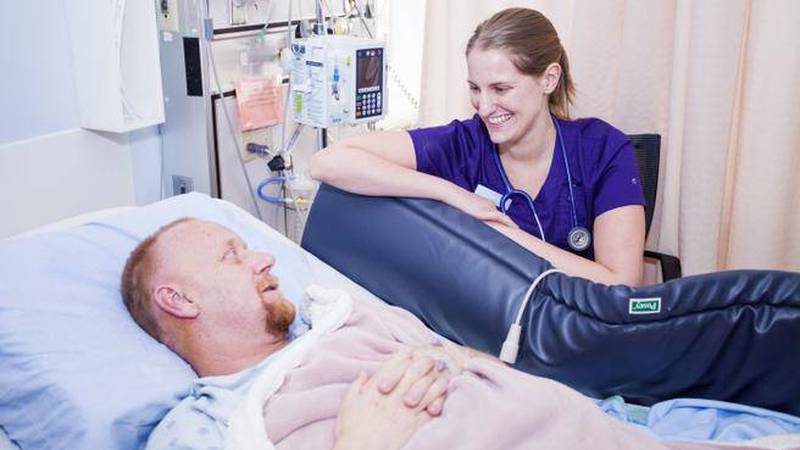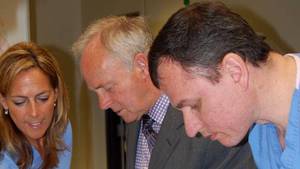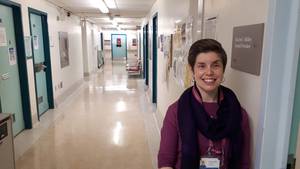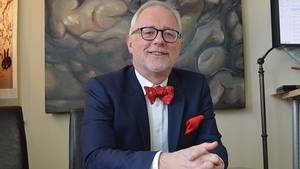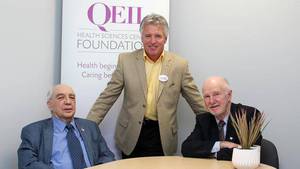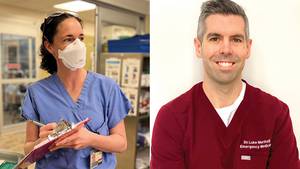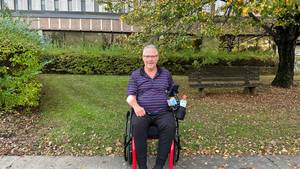The formation of the Academic Neuroscience Program has been a long time coming for the QEII Health Sciences Centre. It’s a union of neuroscience professionals with a simple mission — to create an environment that allows patients with neurological disease to receive the best care and treatment. Practically, this means an investment that provides additional beds for patients, expands and modernizes services, and brings separate neuroscience teams together in a single space.
These might sound like straightforward goals, but they’ve taken years to realize, according to the QEII’s head of neurosurgery, Dr. David Clarke. He says they couldn’t have accomplished these goals without the support of the QEII Foundation, which, in the fall of 2013, launched a fundraising campaign, the
Phase one of this vision involved a change of venue. For some time now the divisions of neurosurgery and neurology have been housed on separate floors. As part of the Academic Neuroscience Program, neurology relocated to allow both disciplines to share a corridor on the hospital’s seventh floor. In this way, they’ve overcome the barriers separating their two disciplines, a move which was completed this past January.
“Our priorities have involved getting our neurology colleagues physically closer to us,” says Dr. Clarke, “so that we can capitalize on our combined expertise to provide the best care.”
Phase two of their mission is the expansion of their Intermediate Care Unit (IMCU), where some of the ward’s sickest patients are kept before surgery and where they recover afterward. This IMCU has traditionally housed a mere four beds, which, as Dr. Clarke explains, has led to great inefficiencies over the years. Their new IMCU, however, will have a total of six beds.
“An extra couple of beds doesn’t sound like a lot,” says Dr. Clarke. “But typically there will be four scheduled neurosurgeries done a day, so it’s not uncommon that access to an extra bed will determine whether that surgery can be done.”
With this additional capacity, Dr. Clarke said providing timely surgical care will be significantly improved and will be greatly appreciated by patients and their families. The expansion of the IMCU is underway and is expected to wrap up this summer, giving way to the Academic Neuroscience Program’s next renovation.
The Epilepsy Monitoring Unit (EMU) is a space in which epilepsy patients are monitored for days — even weeks — at a time. With electrodes continuously recording electrical activity of the brain, the precise location of where their seizures start can be better understood. Typical patients monitored in the EMU have seizures not controlled by medications. With the benefit of the EMU, physicians can determine if surgery is an option for them.
This EMU is expanding also — from two beds to four with construction beginning this summer — and alongside the IMCU, both facilities are getting much needed improvements in the process.
“The exciting thing is that we not only expand, but we update the facilities themselves,” says Dr. Clarke, making special note of modernized safety features for the EMU.
Kari Harrison knows what it’s like to be one of those patients in the QEII’s EMU.
Kari was experiencing up to 64 seizures a day before her first stay in the unit to pinpoint the precise location of her seizures – an experience that led to two separate surgical procedures and ultimately inspired her to pursue a healthcare career of her own.
Today as a registered nurse, Kari provides one-on-one care and support for epilepsy patients being treated in the very unit that led to her upcoming celebration of six years seizure-free.
“Working in this unit, I am so excited for this new expansion which will allow us to treat and cure more patients living with epilepsy,” says Kari.
The final innovation being undertaken by the Academic Neuroscience Program involves the QEII’s spinal program. At present, after a patient receives spinal surgery, they could find themselves in any of 18 beds scattered throughout the hospital. Members from the divisions of neurosurgery and orthopaedics are working to consolidate those 18 beds in a single location, on the same seventh floor corridor as neurosurgery and neurology. This will enable patients with spine disease to receive the best possible care.
While patient care is the priority of all physicians, Dr. Clarke says research and education are also important parts of the mission, including research that results in better patient care and education for the next generation of care providers, including medical students, nurses and residents learning the ropes at the QEII.
“This is really about expanding what we do, in terms of our capacity issues with the IMCU and the EMU,” says Dr. Clarke, “and it’s also about doing it in an environment that allows us to achieve excellence in those three pillars — patient care, education and research.”

